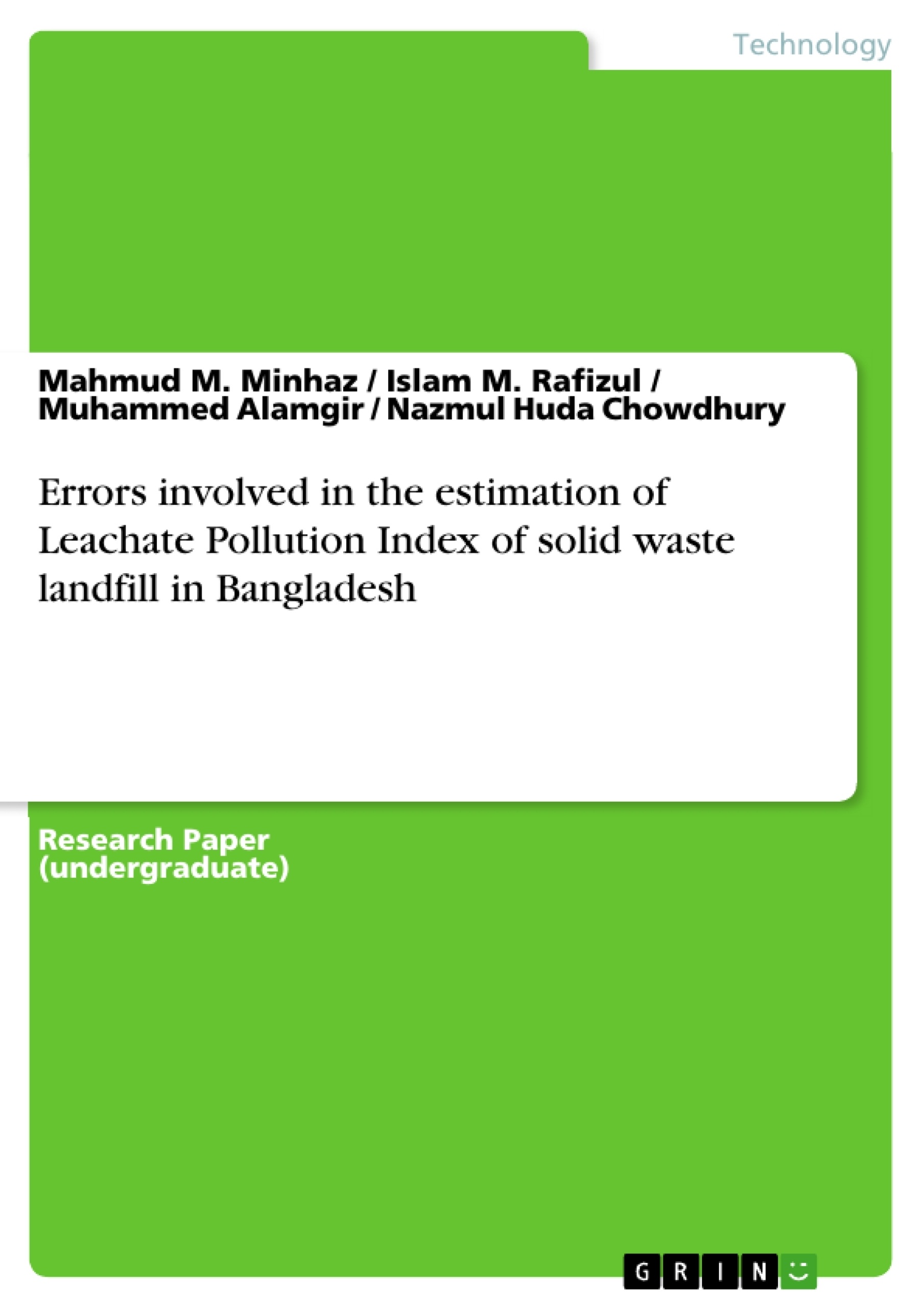An important part of maintaining a solid waste landfill is managing the leachate through proper treatment methods designed to prevent pollution into surrounding ground and surface waters. Any assessment of the potential impact of a landfill on groundwater quality requires consideration of the components of the leachate most likely to causze an envionental impact as well as the source of concentration of those components. Leachate pollution index (LPI)is an environmental index used to quantify and compare the leachate contamination potential of solid waste landfill. This index is based on the concentration of 18 pollutants of the leachate and their corresponding significance. That means, for calculating the LPI of a landfill, concentration of these 18 parameters are to be known. However, sometimes the data for all the 18 pollutants included in the LPI may not be available to calculate the LPI. In this study, the possible errors involved in calculating the LPI due to the nonavailability of data are reported by the author. The leachate characteristic data for solid waste landfill at Chittagong in Bangladesh have been used to estimate these errors. Based on this study, it can be concluded that the errors may be high if the data for the pollutants having significantly high or low concentration are not available. However, LPI can be reported with a marginal error if the concentrations of the non available pollutants are not completely biased.
Inhaltsverzeichnis (Table of Contents)
- INTRODUCTION
- METHODOLOGY ADOPTED
- Leachate Pollution Index (LPI)
- LPI Variables and Their Weight
- Variable Curves
- Variable Aggregation
- Errors Involved in Calculating LPI Due to Nonavailability of Data
- CASE STUDY
- Errors Introduced by Ignoring Pollutant Data Based on Weight Factor
- Removing Pollutants with Low Weight Factors
- Removing Pollutants with High Weight Factors
- Errors Introduced by Ignoring Pollutant Data Based on Weight Factor
Zielsetzung und Themenschwerpunkte (Objectives and Key Themes)
This research explores the potential errors introduced when calculating the Leachate Pollution Index (LPI) for a landfill, specifically when data for certain pollutants are unavailable. The study aims to analyze the impact of missing data on LPI estimation, providing insights into the reliability of this index under data constraints.
- Impact of missing data on LPI calculation
- Error analysis in LPI estimation
- Influence of pollutant weights and sub-index values on LPI accuracy
- Evaluation of LPI sensitivity to data availability
- Application of LPI in landfill management and environmental assessment
Zusammenfassung der Kapitel (Chapter Summaries)
The text begins by introducing the concept of landfill leachate and its potential environmental impact, particularly on groundwater quality. The importance of managing leachate pollution is highlighted, leading to a discussion of the Leachate Pollution Index (LPI) as a tool for quantifying and comparing leachate contamination.
The methodology section elaborates on the LPI's development and its components, including the 18 pollutant parameters and their corresponding weights. The text then presents the case study, using leachate data from a landfill in Chittagong, Bangladesh, to evaluate the errors involved in LPI estimation due to data unavailability.
The study explores two approaches for analyzing these errors: ignoring pollutants based on their weight factors (low or high) and ignoring pollutants based on their sub-index values. This analysis reveals the potential for significant errors in LPI estimation when data for certain pollutants are missing, particularly those with high or low concentrations.
Schlüsselwörter (Keywords)
The main keywords and focus topics of this work are landfill, leachate, pollution, environmental impact, LPI, error analysis, data availability, pollutant weight, sub-index value, and landfill management.
- Arbeit zitieren
- Md Mahmud M. Minhaz (Autor:in), Islam M. Rafizul (Autor:in), Muhammed Alamgir (Autor:in), Nazmul Huda Chowdhury (Autor:in), 2013, Errors involved in the estimation of Leachate Pollution Index of solid waste landfill in Bangladesh, München, GRIN Verlag, https://www.grin.com/document/231721



